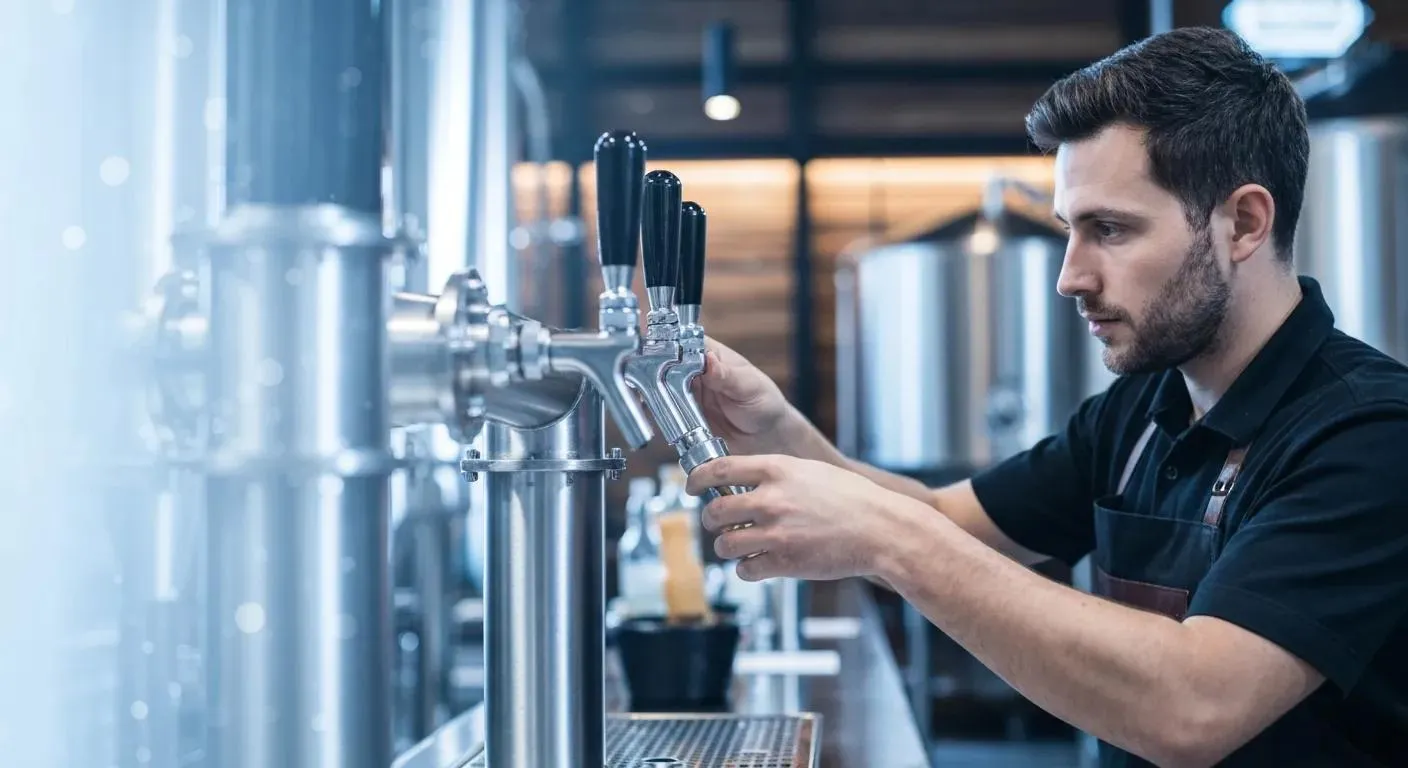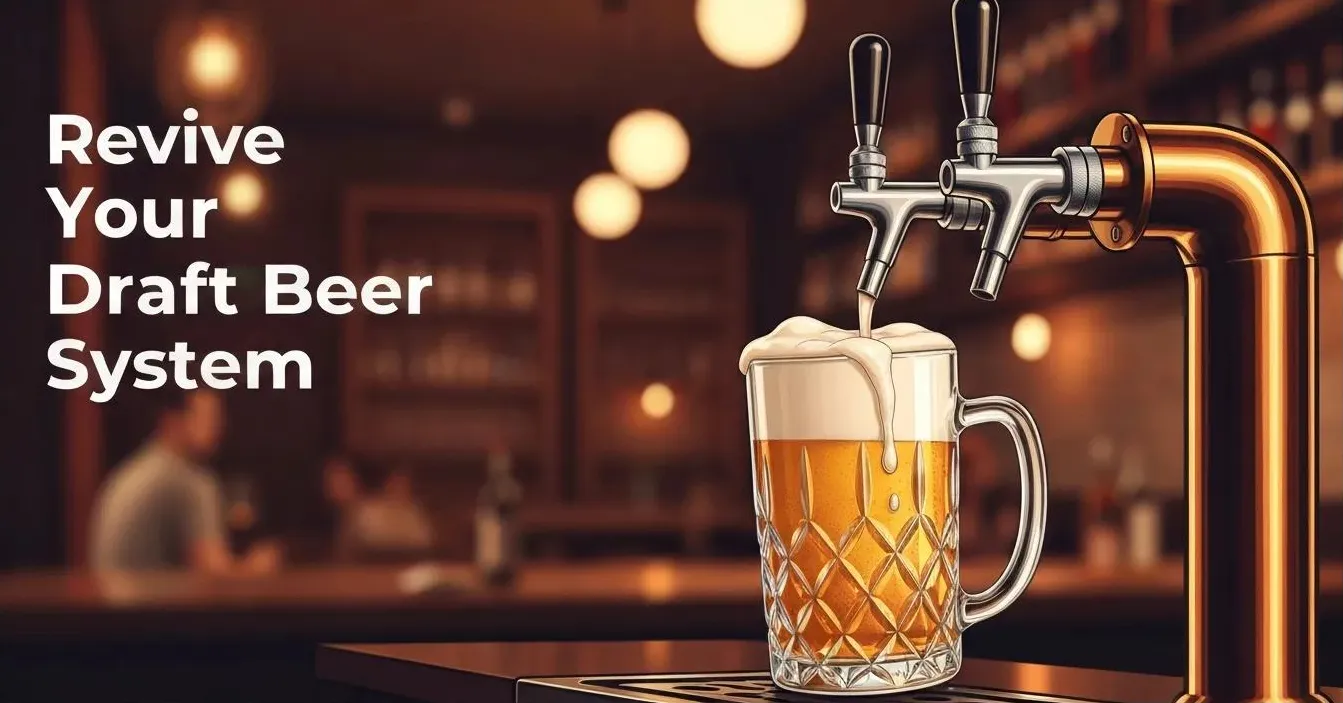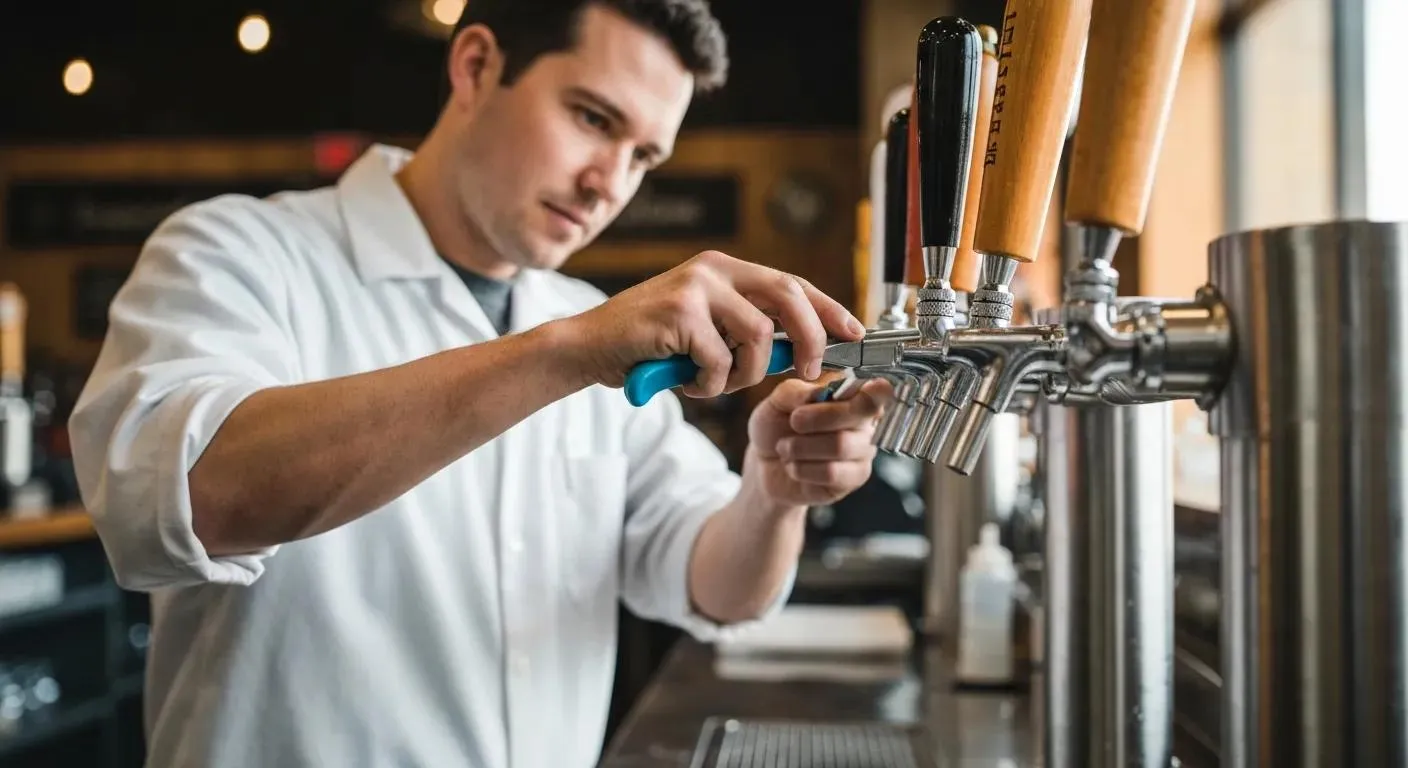Pour Cost Calculator: A Simple Guide for Bar Owners

Calculating the pour cost of draught beer is an essential aspect of running a profitable bar or restaurant. Pour cost is the percentage of revenue that goes towards the cost of the product, and it is crucial to keep beer cost percentage of it as low as possible. The lower the pour cost, the higher the profit margin, and the more successful the business will be. Introducing the concept of the ideal pour cost is important as it helps in aligning liquor cost percentages and menu pricing to optimize drink profitability.
To calculate the pour cost, one must consider the cost of the beer, the waste percentage, and the serving size. The cost of the beer is the price paid to the supplier for each keg or bottle. The waste percentage is the amount of beer that is lost due to spillage, over-pouring, or other factors. The serving size is the amount of beer served to the customer, and it varies depending on the glass size and the type of beer. By considering these factors, bar owners and managers can determine the appropriate selling price for each beer and ensure that they are making a profit.

It is important to note that calculating pour cost is not a one-time task. It should be done regularly to ensure that the prices are up-to-date and that the business is still profitable. Factors such as changes in supplier prices, fluctuations in demand, or new products may affect the pour cost, and it is essential to adjust the drink prices accordingly. By keeping a close eye on the pour cost, bar owners and managers can ensure that their business is successful and profitable.
Why Calculating Draught Beer Pour Cost is Important
Calculating draught beer pour cost is an essential aspect of running a successful bar or restaurant. Pour-cost calculator is the percentage of revenue that goes towards the cost of the product, in this case, beer. It is essential to calculate pour cost to ensure that the establishment remains profitable, and to prevent theft and over-pouring.
When calculating pour cost, it is important to consider the cost of the keg, the number of ounces in the keg, and the serving size. By understanding these factors, bar owners and managers can determine the optimal price for their draught beer. Calculating pour cost helps in understanding the gross profit of each beer sold, reflecting the gross margin of profit on items.
Knowing the pour cost of each beer allows for better inventory management and pricing strategies. It ensures that the establishment is not overcharging or undercharging customers, which can lead to loss of revenue or customers. By accurately pricing beer, the establishment can maximize profits and provide customers with a fair price. Calculating pour cost also helps bar inventory to identify any discrepancies in inventory management. If the pour cost is higher than expected, it may indicate that there is an issue with over-pouring or theft. By identifying these issues, bar owners and managers can take corrective action and prevent future losses.
In summary, calculating draught beer pour cost is crucial for running a successful bar or restaurant. It helps to ensure profitability, prevent theft and over-pouring, and allows for better inventory management and pricing strategies.
Factors Affecting Draught Beer Pour Cost
When calculating the pour cost of draught beer, there are several factors to consider. These factors can impact the overall cost of each pour, affecting the profit margins of the establishment. Liquor cost is a crucial factor in determining the overall pour cost. Here are some of the most important factors that can affect the pour cost formula of draught beer:
Keg Size
The size of the keg is one of the most significant factors that can affect the pour cost of draught beer. The larger the keg size, the lower the cost per ounce of beer. Bottle cost can also impact the overall cost calculation when considering different container sizes. For example, a half-barrel keg (15.5 gallons) will have a lower cost per ounce than a quarter-barrel keg (7.75 gallons). This is because the cost of the keg is spread out over more ounces of beer, resulting in a lower cost per pour.
Beer Type
The type of beer being served can also impact the pour cost of draught beer. Specialty beers, such as craft beers or imported beers, typically have a higher cost per ounce than mass-produced beers. This is because the cost of brewing and the beverage cost of importing these beers is higher, resulting in a higher cost per pour.
Pour Size
The size of the pour can also impact the pour cost of draught beer. The larger the pour size, the higher the cost per ounce of beer. This is because the cost of the keg is spread out over fewer ounces of beer, resulting in a higher cost per pour. However, larger pour sizes can also result in higher profit margins, as customers may be willing to pay more for a larger pour.

Pricing Strategy
The pricing strategy used to calculate liquor, by the establishment can also impact the pour cost of draught beer. For example, if the establishment prices their beer based on the cost per ounce, they may have a lower pour cost but a lower profit margin. On the other hand, if the establishment prices their beer based on the perceived value to the customer, they may have a higher pour cost but a higher profit margin. Understanding the retail value of the product helps in setting competitive prices.
In conclusion, several factors can affect the pour cost of draught beer. By considering these factors and adjusting their pricing strategy accordingly, establishments can maximize their profit margins and beverage costs while still offering quality beer to their customers.
Calculating Draught Beer Pour Cost
Pour cost
Calculating the pour cost for draught beer is a crucial step for any bar or restaurant owner. Accurately calculating liquor costs is essential to ensure profitability. It helps to ensure that the establishment is making a profit while also providing a reasonable price for the customers.
Pour Cost Formula for Calculating Pour Cost
The formula for calculating the pour cost of draught beer is simple. It involves dividing the wholesale cost of the keg by the number of ounces in the keg, and then multiplying the result by 100 to get the actual cost percentages a percentage. The formula is as follows:
(Purchase price of keg / Number of ounces in keg) x 100 = Pour cost
For example, if a bar owner purchases a 15.5-gallon keg of beer for $100 and the keg contains 1,984 ounces, the pour cost would be calculated as follows:
($100 / 1,984) x 100 = 5.04%
Therefore, the pour cost for the beer in this example is 5.04%.
Example Calculation
To further illustrate how to calculate the pour cost of draught beer, consider the following example:\
- A bar owner purchases a 15.5-gallon keg of beer for $100.
- The keg contains 1,984 ounces of beer.
- The bar owner sells a 16-ounce pint of beer for $5.
To calculate the value of the pour cost, the bar owner would follow these steps:
1. Divide the purchase price of the keg by the number of ounces in the 1/2 keg:
$175 / 1,984 = $0.08 per ounce
2. Multiply the cost per ounce by the number of ounces in a pint:
$0.08 x 16 = $1.28 per pint
3. Divide the cost per pint by the selling price of a pint:
$1.28/ $6.50 = 0.19
4. Multiply the result by 100 to get the pour cost percentage:
0.19 x 100 = 19%
In this example, the pour cost for the beer is 19%, which is within the industry standard of 20% or less.
By calculating the pour cost of their draught beer, bar, and restaurant owners can ensure that they are pricing their products correctly and making a profit while still providing a reasonable price for their customers.
Managing Draught Beer Pour Cost
Managing draught beer pour cost is an essential aspect of running a successful bar or restaurant. Pour cost is the percentage of the sale price of a drink that goes towards the cost of the product. For draught beer, the beverage cost percentage or the pour cost can vary depending on the price of the beer, the size of the pour, and other factors. In this section, we will discuss how to track pour cost, adjust pricing strategy, and optimize pour size to manage draught beer pour cost-effectively. Additionally, a well-structured drink menu is crucial for managing pour costs and attracting customers.
Tracking Pour Cost
To manage draught beer pour costs, it is crucial to track the cost of the beer and the amount of beer sold. This can be done by using a point of sale (POS) system that tracks sales and inventory, or by manually tracking sales and inventory. By tracking pour cost, restaurant industry bar, and restaurant owners can identify which beers are the most profitable and which beers are costing them money.
Adjusting Pricing Strategy
Once pour cost is tracked, bar and restaurant owners can adjust their pricing strategy to manage pour cost-effectively. One way to do this is by adjusting the price of the beer. If the pour cost is too high, the price of the beer can be increased to maintain profitability and food sales. If the pour cost is too low, the price of the beer can be decreased to increase sales.
Another way to adjust pricing strategy is by offering specials or promotions. For example, offering a discount on a slow-moving beer can increase sales and reduce inventory. By adjusting pricing strategy, bar and restaurant owners can manage to pour cost-effectively and maintain profitability.
Optimizing Pour Size
Optimizing pour size is another way to manage draught beer pour cost-effectively. By offering different pour sizes, bar and restaurant owners can adjust the price of the beer and manage pour costs. For example, offering a smaller pour size at a lower price can increase sales and reduce pour costs. Offering a larger pour size at a higher price can increase profitability.
In conclusion, managing draught beer pour costs is essential for running a successful bar or restaurant. By tracking pour cost, using purchasing strategy, adjusting pricing strategy, and optimizing pour size, bar and restaurant owners can manage to pour cost-effectively and maintain profitability.
Summary
This blog post provides a detailed guide for bar and restaurant owners on the importance of calculating and managing draught beer pour costs. Pour cost, the percentage of revenue dedicated to the cost of beer is crucial for maximizing profit margins. Regularly calculating pour cost and adjusting prices based on supplier costs, demand changes, and new products are essential to ensure ongoing profitability.
The post highlights key factors affecting pour costs, such as keg size, beer type, pour size, and pricing strategy. Larger kegs typically offer lower costs per ounce, while specialty beers incur higher costs. Establishments must balance cost per ounce with perceived customer value when setting prices. The blog offers a simple pour cost formula and underscores the importance of tracking pour costs and adjusting pricing strategies. By optimizing pour size and reducing waste, bar and restaurant owners can maintain profitability and offer fair pricing to their customers.
Check out our Draft Calculator and see results.



